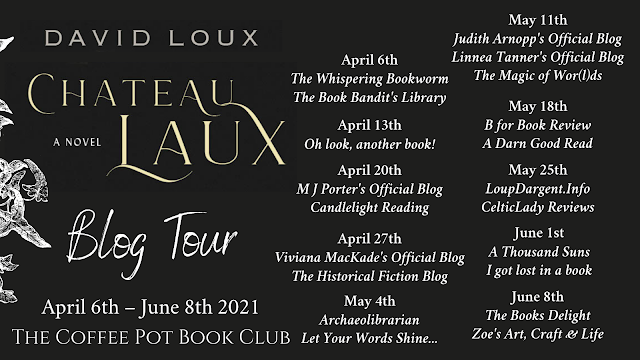What my Grandmother Left Me:
The Inspiration Behind Under the Light of the Italian Moon by Jennifer Anton
I started writing Under the Light of the Italian Moon in 2006, which became the year of coming to a new understanding of womanhood. I was pregnant with my daughter, and at my baby shower, aunts and cousins surrounded me in blessings. My Italian grandmother sat to the side, a quiet spectator. That night, she called an ambulance and never left the hospital. Two months later, I had my daughter via an emergency c-section, then went into heart failure, causing me to have to leave my baby at home with my mom. Doctors tried to save my malfunctioning heart. I recovered—but my grandmother did not. She died, never getting to meet my daughter. I wondered what of hers I could give to my child to make sure she was remembered.
She had told me little about her life in Italy. I still remember the night I asked her about WWII in Italy, because we were studying WWII in highschool. She shared that Nazis had occupied her town, friends had been killed in their atrocities. For the first time, I heard the name of a town, Fonzaso – where she lived the beginning seventeen years of her life. She admitted that she hadn’t wanted to leave, but she needed to stay with her family. I tucked this information into my memory. As a teenager, I didn’t have the inclination to follow up on questions forming in my head when I heard those words: Nazis, Fonzaso, partisans, WWII. It was hard to associate all of that with my grandma, who loved to sit in her Daniel Green slippers and make polenta on Sundays. I was American, so was she, I thought. It was only her meals, her infrequent Italian demands (Basta!) and her phone calls abroad in Italian that told me she was different. But I never considered her what she was—an immigrant.
In 2006, when she died, a notebook on my counter held questions I had intended to ask about her childhood in Italy and during WWII. Instead, I filled pages with her eulogy, written as a letter to my daughter to introduce her to her great grandmother. At the wake people spoke of her youth: gymnastics competitions we had never heard about, and made us wonder if we fully knew the woman who I had called Grandma Lasia. My mom, who never speaks in public, stood up with a stronger voice than I had ever heard her use, and spoke about her mother. It was an epiphany moment for me. Mothers, daughters, grandmothers—our connection flashed in front of me, as boldly as sunlight in my eyes.
 |
| Strong Italian Women. Authors ancestors. |
There began the fourteen-year journey of researching and writing my first novel. The questions had to be answered. The stories had to be told. I was the only one to do it. Like raising a second child, I gave writing and researching my early mornings, late nights, vacations and weekends. I visited my grandmother’s sister with my tape recorder and notepad, documenting stories. I called cousins in Canada who had grown up in Fonzaso with my grandmother, asked them questions and listened. I wrote, researched and wrote some more.
But you can’t write a novel about Italy without truly understanding the country. So, I applied for my Italian citizenship and travelled to meet family in Fonzaso and Serena del Grappa. I hired translators and consumed large amounts of coffee, polenta, eggplant parmigiana, prosecco, biscotti, wine and grappa while sitting across from elderly relatives. Their eyes glistened as they answered my questions—going back, remembering. Looking at them, I did not see age spots and grey hair; I saw them as they were in my book, when Mussolini implemented his egotistical plan and Nazis occupied their town. I shook my head time and again at their stories, the atrocities they witnessed but never mentioned, until you asked.
 |
| Researching, author and her aunt. |
It struck me when I met with them that they had stayed while so many had left. In fact, I interviewed four Italians who emigrated to the U.S. and Canada, and four who remain in or near Fonzaso after the war. It was strange to think that my grandmother was the link. When I saw her, sitting in the chair with the phone to her ear, nylons rolled down around her ankles in her housecoat, she was speaking to these people. She was keeping her connection to Italy. But the rest of my family had only known Americanness. We didn’t feel the link. Had I not had the curiosity and gone back; had I not written the novel, it is possible these connections would have been broken forever.
My novel, Under the Light of the Italian Moon, is biographical fiction. It takes the stories and history of my family and the times and weaves them together with a fictional thread to build a story I hope readers want to read. Like The Crown or books like The Tattooist of Auschwitz by Heather Morris and Beneath a Scarlet Sky by Mark Sullivan, real people’s lives mingle with fiction to tell stories that needed to be remembered. I worked with the best editors I could find, starting with Sally Orson-Jones and then Angela Myers, who had edited The Tattooist of Auschwitz and Cilka’s Journey.
It took me fourteen years to write my novel. I know Under the Light of the Italian Moon would not be what it is if it had taken any less time. Over these years, I have watched my mother grow into her role as nonna. I have watched my baby girl grow into a teenager. I am more certain than ever that the strength of the world is in its women—that the path forward is through aspiring to love.
The book is done, it published on March 8th, International Women’s Day. My grandmother helped make it happen. She is in heaven, smiling and knowing she never left me, knowing I brought her back to Italy.
Where to buy:
Jennifer Anton
Jennifer Anton is an American/Italian dual citizen born in Joliet, Illinois and now lives between London and Lake Como, Italy. A proud advocate for women's rights and equality, she hopes to rescue women's stories from history, starting with her Italian family.


















